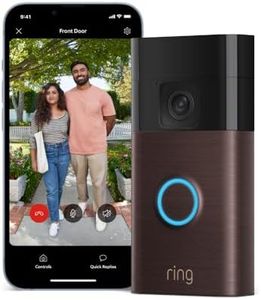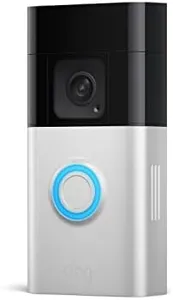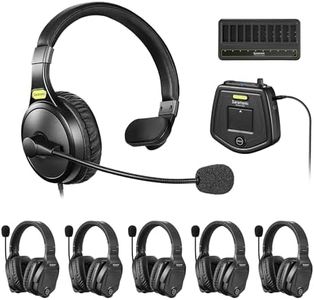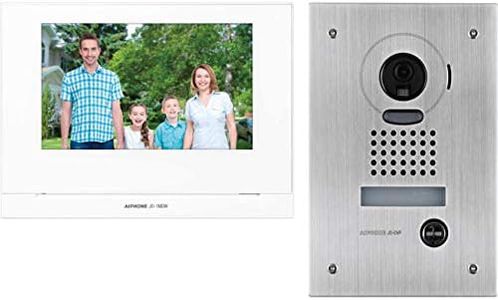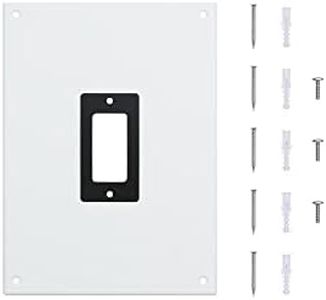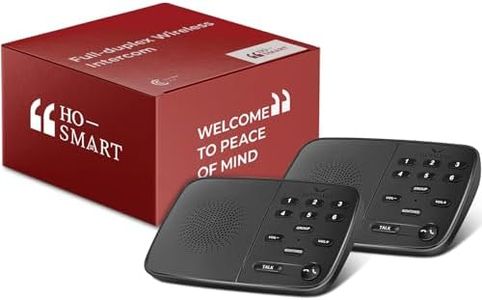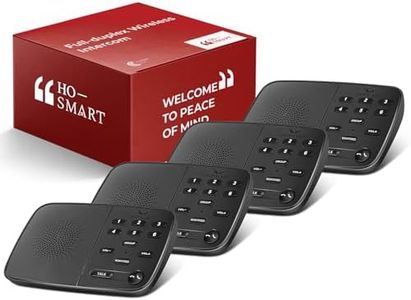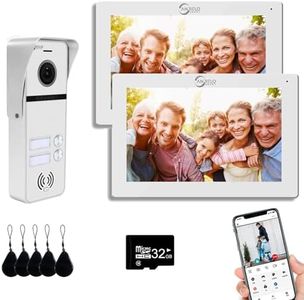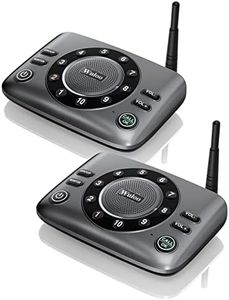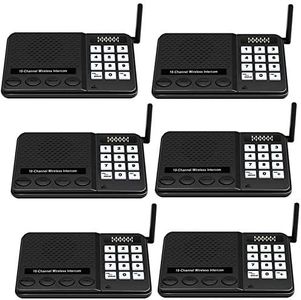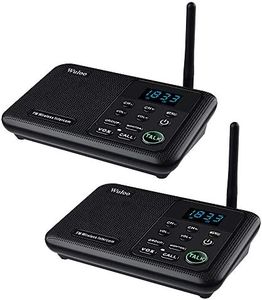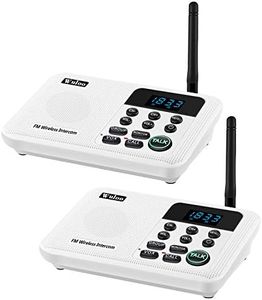We Use CookiesWe use cookies to enhance the security, performance,
functionality and for analytical and promotional activities. By continuing to browse this site you
are agreeing to our privacy policy
10 Best Wireless Home Intercoms
From leading brands and best sellers available on the web.Buying Guide for the Best Wireless Home Intercoms
Choosing a wireless home intercom system is about making communication at home easier and more efficient, whether you have a large house, family members on different floors, or simply want a way to talk without shouting across rooms. The key is to focus on how you'll be using the intercom. Think about how many rooms need access, whether you'll want to connect devices via phone apps, and if you need features like privacy or video communication. Understanding the main features will help you match the intercom system to your household’s routine and ensure convenience for everyone using it.RangeRange refers to the maximum distance over which the intercom units can communicate with each other. This is important because a system with insufficient range might not cover your entire house, especially if you have thick walls or multiple floors. Intercoms with shorter ranges (up to a few hundred feet) are suitable for small apartments or single-story homes, while those with longer ranges (over 1000 feet) are better for large houses or even for use between a house and a detached garage. Consider the layout and size of your home: measure the farthest distance between rooms you want to connect, and pick a system whose range comfortably exceeds that distance, factoring in obstacles like walls or floors that can reduce range.
Number of Channels and UnitsChannels are the separate lines of communication, and units are the individual devices you place around the house. Having more channels lets several conversations happen at once without interference, which is useful for busy households. Some systems only let you broadcast to all units at once, while others allow private, one-to-one communication. Think about your household: if you want family members to have private chats or if you’ll need several intercoms working simultaneously, choose a system with multiple channels and enough expandable units to cover each room or area.
Power SourceIntercom systems can be powered by batteries, plugged into wall outlets, or sometimes use both options. Battery-powered units are flexible and can be placed anywhere, but you'll need to change or recharge them regularly. Plug-in units never run out of power as long as there’s an outlet nearby, but their placement is less flexible. Some systems offer a mix, giving you more options. Consider where you want to place your intercoms and how often you’re willing to deal with replacing or charging batteries. If you want a set-and-forget solution, go for plug-in models; for portability, choose battery power.
Call Features (Broadcast, Private, Hands-Free)This spec refers to how you communicate: some systems only broadcast your message to all connected units, while others allow you to make a private or direct call to a specific room. Hands-free features let you talk without holding buttons, making it easier if you have your hands full. Broadcast-only systems work well for announcements to everyone, but if you want privacy or need to avoid disturbing the whole house, look for private call functions. For added convenience, especially in the kitchen or garage, hands-free voice-activated options are a good pick.
Integration and Smart FeaturesSome modern intercom systems connect with smartphones, smart speakers, or even integrate with doorbells and security cameras. This means you can use an app to call your intercom from anywhere, or get alerts if someone uses a unit. For families who use smartphones or smart home systems a lot, integration is very handy; if you prefer simple, standalone devices, focus on traditional intercoms without these extras. Pick based on your comfort with technology and whether you want these advanced features.
Audio and Video QualityAudio quality ensures you can hear and be heard clearly; higher quality minimizes static and echoes. Some intercoms also offer video calling, which adds a camera so you can see who’s speaking. For most, clear audio is enough, but if you want added security or want to check on kids or the front door visually, consider a system with video capability. Think about your primary use: for simple conversations, focus on clear audio; for more visual interaction or security, look for good video quality.
Ease of InstallationSome wireless intercoms are plug-and-play, needing only to be plugged in or have batteries inserted; others may require mounting on walls or pairing with Wi-Fi. Simple installation is quick and easy for anyone, while more complex setups might need DIY skills. If you want a hassle-free setup you can do yourself, look for systems advertised as easy to install or plug-and-play, and consider the tools or instructions you’ll need based on your home’s layout.
